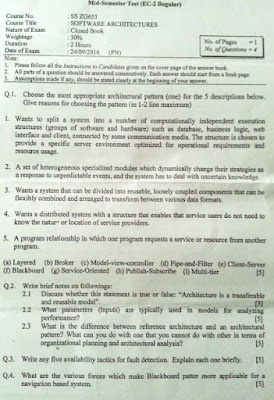Mid-Sem Paper Solutions:
Question:
What are the different types of active security attack ?
Answer:
Security Attack: Any action that compromises the security of information owned by an organization. There are 2 types of attack as shown below.
Active Attack:
An Active attack attempts to alter system resources or effect their operations. The attacker changes the data or harms the system.
Passive Attacks:
The attacker’s goal is to just obtain the information. The attack does not harm the system.
Types of active attacks include:
- Denial of service (DoS) - It prevents normal use of communication facilities. Slowing down or totally interrupt the service of the system. E.g. multiple requests to bring an exam result server down.
- Session replay - Subsequent retransmission of a captured message to produce an unauthorized effect. E.g. Bill payment fake reminders.
- Masquerade - Masquerade attack takes place when one entity pretends to be different entity. E.g. Hoax bank sites.
- Message modification - It means that some portion of a message is altered or that message is delayed or reordered to produce an unauthorized effect.
- Repudiation - Sender denies that it sent the message or the receiver denies that it received the message.
- Trojans - A Trojan horse, or Trojan, is a type of malicious code or software that looks legitimate but can take control of your computer. A Trojan is designed to damage, disrupt, steal, or in general inflict some other harmful action on your data or network.
Types of passive attack include:
- Snooping - Data is intercepted by an unauthorized person. E.g. Tapping
- Traffic Analysis - May be the data is masked, so no information can be extracted but some patterns like - sender, receiver, message length, time of the message etc. can be extracted to make intelligent guesses.

















